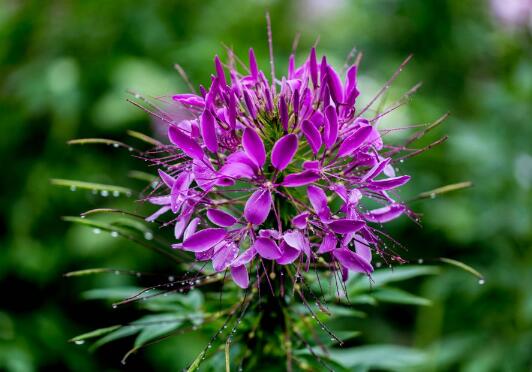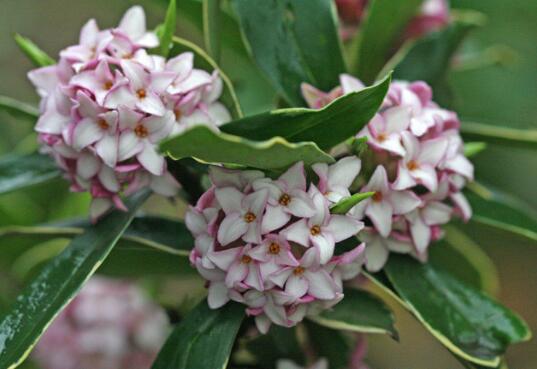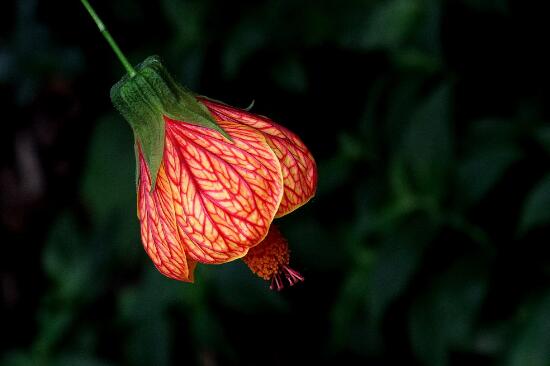What to do when the drunken butterfly flower grows, the pest control of the drunken butterfly flower / 2 insect pests 2 diseases
In the growth process of drunken butterfly flower, the last thing we want to encounter is the problem of diseases and insect pests, which do great harm to the plant, and may cause plant death if it is not dealt with in time. So what should I do if I get drunk and grow worms? How to control the diseases and insect pests of drunken butterfly flower? Next, the editor will take you to learn about it.
First, what to do when the drunken butterfly grows and find the reason?

If you want to know what to do with drunken butterfly worms, first of all, we need to understand what kind of insects are growing, so that we can deal with them pertinently, because the prevention and control methods of each kind of diseases and insect pests are different. Details are introduced below, friends who are troubled in this respect can learn about it.
II. Pest control of drunken butterfly flower (pest)
1. Borer
Borer is a kind of pest belonging to Lepidoptera. This pest generally has a high incidence in the south. It mainly harms the leaves of drunken butterfly flowers, which will cause their leaves to gradually curl and wither and finally fall off gradually.
Control method: when we deal with the diseases and insect pests of this drunken butterfly flower, we can spray it with 90% crystal diphtheria and 75 grams of 90% acephate soluble raw powder.
two。 Spodoptera litura
Spodoptera litura is a kind of leaf-eating pest, its high incidence period is in the summer every year, so we must pay special attention at this time. This pest mainly feeds on the leaves of drunken butterfly flowers, and even causes plant death in serious cases.
Control method: for this kind of drunken butterfly disease and insect pest, we can use 2.5% cypermethrin EC 2000-3000 times to spray it.
III. Pest control of drunken butterflies (diseases)
1. Leaf spot disease
Leaf spot is a disease in many plants, and the drunken butterfly flower is no exception. There are many oval, long brown spots on its leaves, which will spread gradually with the passage of time, and finally lead to the gradual death of the plant.
Control method: when we deal with the diseases and insect pests of this drunken butterfly flower, we can spray it with 50% tolizine wettable powder 500 times, usually once every 5-7 days, and then recover after 2-3 times.
two。 Rust disease
Rust is a kind of disease caused by fungi, which mainly harms the leaves, stems and fruits of drunken butterfly flowers. Many different color blister spots will appear in the affected parts at the time of the disease, and will gradually spread over time. When the blister spots are dense into pieces, the plant will also die quickly due to the evaporation of a large amount of water in the body.
Prevention and control methods: for rust, which is a pest of drunken butterfly flowers, we can use 3000 times of WP to control rust, which is usually sprayed once every 7-12 days, and can be cured after 1-2 times.
Control methods of common diseases and insect pests of drunken butterfly flower
There are often diseases such as leaf spot and rust.
Prevention and control methods:
1. Leaf spot disease was sprayed with 500 times solution of 50% tolizine wettable powder.
2. Rust can be controlled by 3000 times liquid leaf spray with 50% verapamil wettable powder.
The drunken butterfly flower is prone to Lepidoptera pests at the seedling stage.
Prevention and control methods:
The insecticide avermectin 4000 times can be used for foliar spraying.
Daily culture methods and pest management of drunken butterfly
Today, the editor of Huinong Network tells you about the cultivation and management techniques of drunken butterfly flowers, and this technology mainly focuses on how to prolong the viewing period and dwarfing of potted grass flower varieties.
1 preparation before sowing
1.1 accelerating budding
On May 1st, the seeds were soaked in 28 ℃ warm water for 5 hours, and the seeds were fully absorbed and expanded. They were placed in a light incubator for 4 ℃ and treated at low temperature for 5 days. A week later, 95% of the seeds were "white" and began to sow.
1.2 Seedling bed preparation
Select the land with high dryness, cool ventilation, good drainage, loose soil and fertile soil to make the seedbed 120 feet, build the greenhouse, cover the shade net, and cover the whole shed with insect prevention net; on May 5, use the special nutritional soil loading plate for flowers in the 288 hole plate, and the nutrient soil is 1cm from the surface of the hole plate.
2 sowing
Sow seeds on the morning of May 7, 1 ~ 2 grains per hole, sow evenly in the center of the hole, sprinkle about 1 inch of nutritious soil evenly after all sowing, pour enough water, and then cover the surface with newspaper to moisturize.
3Seedling stage management
On May 10, remove the mulch in the greenhouse, let the seedlings fully see light in sunny days, cover the greenhouse with film on rainy days, keep the soil moist at seedling stage; remove weak seedlings 1-2 days after emergence, leave 1 plant in each hole, squat seedlings when they have 3 true leaves on May 23, water permeable once on May 25, ready to plant.
4 soil preparation and fertilization in the field
In late April, the land was leveled and fertilized. The water-soluble ternary compound fertilizer with N: P: K = 15: 15: 15 was applied with 1000kg/667 fertilizer, and it was evenly mixed with soil according to the combination of 50kg/667 fertilizer and rake ploughing, and should be made into shallow trench and flat bed according to the need.
5 colonization
The plant was planted on May 27th. After planting, the soil was covered to the cotyledon, and the root water was fixed with water. The row spacing was 35cm and the plant spacing was 40cm, about 4000 plants / 667m.
6. Field management
The seedlings with 8 ~ 10 true leaves were irrigated once with water soluble ternary compound fertilizer (N: P: Kraft 10: 30: 20) 1000 times on June 15 and 1000 times with water soluble ternary compound fertilizer (N: P: Kraft 10: 30: 20) on June 30 to promote plant reproductive growth. During the whole growing period, sufficient water was supplied to keep the soil moist, bud formation and flowering stage, topdressing ternary compound fertilizer (N: P: K = 15: 15: 15) 1 ~ 2 times, each time 10kg/667 fertilizer, once every semimonthly, usually watering to keep the soil moist, and controlling watering and topdressing during the growth period to prevent overgrowth of plants and affecting flowering.
7 regulating plant type
(2) the effect of coring and spraying 400mg/L paclobutrazol once a week before flowering was the best, and the viewing period was up to 114d.
8 Control of diseases and insect pests
Leaf spot disease was sprayed twice with 50% methyl topiramate wettable powder, and rust was sprayed twice with 50% verapamil wettable powder 1500 times. When Lepidoptera pests appeared at the seedling stage, 10% avermectin wettable powder 800 times solution was sprayed on the leaves for 2 times, and during the growing period, 700 times solution of 10% imidacloprid wettable powder and 5% carbazem EC were used. Bacillus thuringiensis 600-fold insecticides alternately control Plutella xylostella, cabbage green and aphids and other pests for 3 times.
9 harvest
The plants were harvested before the first frost at the end of November, and the seeds were harvested one after another after maturing. After harvest, the fruit was dried and rubbed lightly to make it completely separated from the fruit and dried into the bag; if there were no seeds, the residual flowers should be cut off in time to reduce nutrient consumption, so as to prolong the flowering period and make green manure ploughing into the ground after straw crushing.
All right, that's all for today's content. if farmers are interested in the breeding skills of drunken butterfly flowers, you are welcome to comment at the bottom of Huinong website.
- Prev

What if Phnom Penh Daphne grows worms? disease and pest control of Phnom Penh Daphne / 2 insect pests and 3 diseases
In the growth process of Phnom Penh Daphne, the last thing we want to encounter is the problems of diseases and insect pests, which do great harm to the plant, not only affect the ornamental, but also lead to the phenomenon of plant death. So what if Phnom Penh Ruixiang grows worms? How to prevent and control diseases and insect pests of Daphne odorifera
- Next

What to do when the lantern flower grows insects? disease and pest control of lantern flower / 3 insects and 2 diseases sprayed with medicine
As a common beautiful flower, lantern flower is very effective, it is like a lantern, it not only looks good, but also can treat kidney deficiency medicinally! Such plants are naturally lovable, but if they suffer from diseases and insect pests, the beauty of lantern flowers will never return. At that time, flower friends must be in a hurry! that
Related
- Fuxing push coffee new agricultural production and marketing class: lack of small-scale processing plants
- Jujube rice field leisure farm deep ploughing Yilan for five years to create a space for organic food and play
- Nongyu Farm-A trial of organic papaya for brave women with advanced technology
- Four points for attention in the prevention and control of diseases and insect pests of edible fungi
- How to add nutrient solution to Edible Fungi
- Is there any good way to control edible fungus mites?
- Open Inoculation Technology of Edible Fungi
- Is there any clever way to use fertilizer for edible fungus in winter?
- What agents are used to kill the pathogens of edible fungi in the mushroom shed?
- Rapid drying of Edible Fungi

